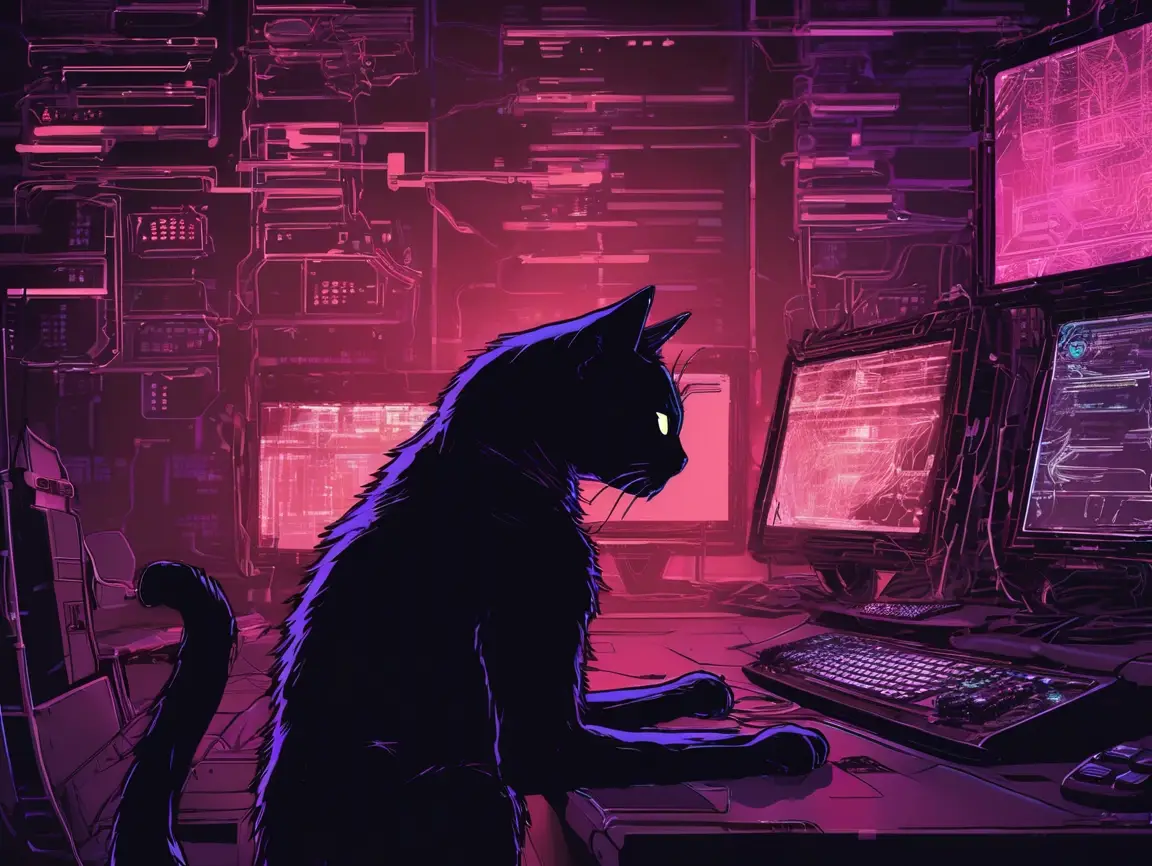1. Overview
BlackCat, also known by its alias ALPHV, is one of the most sophisticated and dangerous ransomware groups currently active. First observed in late 2021, BlackCat has rapidly built a reputation for technical innovation, aggressive extortion tactics, and high-value targeting. It was the first major ransomware group to write its payload in Rust, allowing it to execute across both Windows and Linux/ESXi environments with high performance and stealth.
Operating under a Ransomware-as-a-Service (RaaS) model, BlackCat recruits affiliates to deploy its ransomware while the core team provides infrastructure, leak sites, negotiation portals, and development updates. Its affiliates are often highly skilled, with backgrounds linked to prior operations including BlackMatter, DarkSide, and REvil.
2. Origin and Evolution
BlackCat/ALPHV emerged in the wake of international law enforcement actions that disrupted several major ransomware families. Intelligence suggests that ALPHV absorbed former affiliates and tooling from BlackMatter and DarkSide, both of which had links to the notorious Colonial Pipeline attack in 2021.
From its inception, BlackCat differentiated itself through its use of Rust, a memory-safe language that allows cross-platform support and high modularity. The group has since expanded its capabilities to include data exfiltration, ransomware API integration, and even clearnet leak site hosting—a rare and bold tactic.
3. Tactics, Techniques, and Procedures (TTPs)
BlackCat affiliates use a broad array of techniques to gain access, establish persistence, and execute payloads. Notable tactics include:
- Initial Access:
Exploitation of public-facing services (T1190), credential abuse via RDP/VPN (T1078), and phishing with malicious attachments (T1566.001). - Lateral Movement:
Use of Cobalt Strike, PsExec, and RDP for movement within the environment (T1021), often supported by credential dumping via Mimikatz or LSASS memory scraping (T1003). - Data Exfiltration:
Large-scale data theft using Rclone, MEGASync, or custom PowerShell scripts (T1041). BlackCat actors typically stage exfiltrated data before encryption. - Encryption:
Payloads support AES-256 and ChaCha20 encryption and target entire networks. Files are typically renamed with the.alphvor.blackcatextension. - Multi-Extortion:
Beyond data encryption and theft, BlackCat affiliates may engage in harassment, public leak threats, and clearnet exposure to escalate pressure on victims.
4. Targeting Profile
BlackCat targets large and mid-sized enterprises, including:
- Energy and utilities providers
- Financial and legal institutions
- Healthcare and life sciences
- Government contractors and municipalities
- Education and research institutions
UK organisations—especially those in critical infrastructure and the legal sector—have been directly targeted in several recent campaigns. The group’s focus is on organisations with high-value data and limited downtime tolerance.
5. Notable Campaigns and Victims
BlackCat has claimed responsibility for numerous high-profile incidents, including:
- Lehigh Valley Health Network (US): Patient photos and sensitive records leaked.
- Munster Technological University (Ireland): Systems encrypted and data exfiltrated.
- Swissport (Global Aviation Services): Disruption to airport services and data leak.
- Italian energy company Eni SpA: Alleged data breach and extortion attempt.
- Multiple UK-based law firms and universities: Listed on ALPHV’s leak site with sample documents and credentials.
These incidents illustrate the group’s global reach and willingness to target sensitive sectors.
6. Ransomware and Leak Site Behaviour
BlackCat maintains a dark web leak site that lists victims, publishes sample data, and offers countdowns to full data release. Distinctively, the group has also:
- Hosted leaked data on clearnet domains to amplify reputational pressure
- Developed a searchable portal allowing journalists or researchers to browse stolen data
- Offered “proof of concept” leaks to increase urgency during negotiations
Ransom demands typically range from £500,000 to £10 million, depending on the victim’s size, industry, and data sensitivity.
7. Technical Indicators
Indicators of compromise include:
- File extensions:
.alphv,.blackcat - Ransom notes named
RECOVER-[random ID].txt - Deployment of
rclone.exe,7z.exe, and PowerShell-based exfiltration scripts - Scheduled tasks initiating payloads at system reboot
- Network connections to domains and C2 nodes associated with Eastern Europe
Updated IOCs and detection signatures are available through UK Cyber Defence Ltd.
8. Defensive Measures and Recommendations
To protect against BlackCat ransomware:
- Enforce MFA on all external and internal privileged accounts
- Monitor for anomalous PowerShell and file compression activity
- Patch critical vulnerabilities in VPNs, firewalls, and Exchange servers
- Deploy EDR/XDR with rollback and behavioural analytics
- Regularly test offline and immutable backups
- Educate staff about phishing, credential theft, and unusual login attempts
9. Attribution and Alliances
BlackCat is widely believed to be a rebranded and expanded version of BlackMatter, which itself descended from DarkSide. These groups share common affiliate recruitment patterns, encryption logic, and infrastructure development cycles.
While BlackCat is financially motivated, its resilience and adoption of supply chain tactics (via third-party services and trusted platforms) make it operationally equivalent to many APT actors in terms of impact.
10. Conclusion
BlackCat (ALPHV) represents the pinnacle of modern ransomware development, blending technical agility, high-impact targeting, and brutal multi-extortion tactics. UK organisations—especially in critical infrastructure, legal, and finance—should treat BlackCat as a strategic threat and review incident response, segmentation, and data resilience measures accordingly.
Proactive monitoring, segmented access controls, and rapid response readiness remain essential defences.
Author:
Threat Intelligence Team, UK Cyber Defence Ltd
All intelligence current as of May 2025






